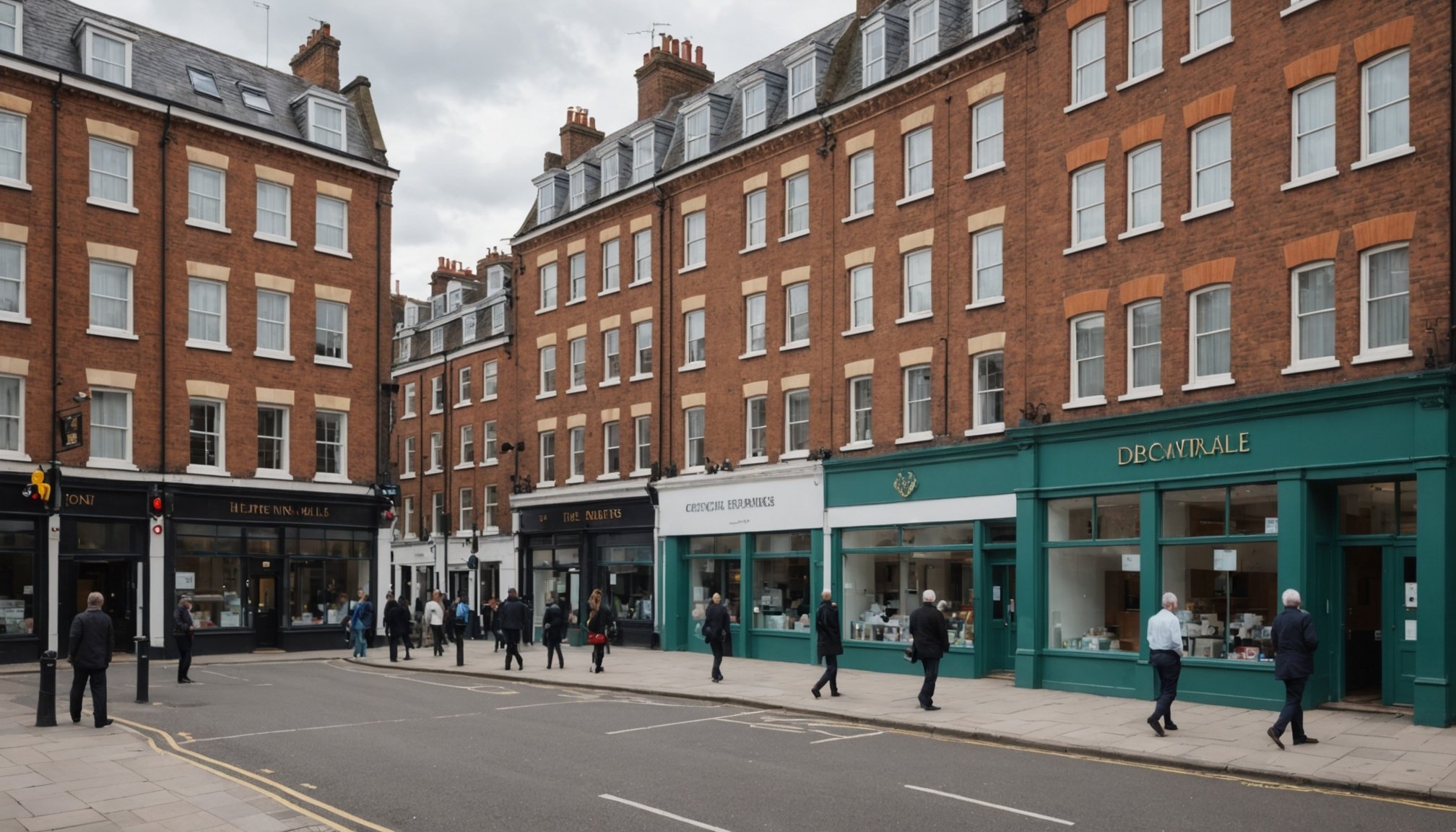The Direct Impact of Healthcare Proximity on Property Values
In the bustling realm of London real estate, the closeness to healthcare facilities plays a pivotal role in determining property values. But how direct is this impact? According to statistical analyses, areas with robust healthcare access tend to see a noticeable uptick in property prices. This isn’t just a coincidence; case studies demonstrate time and again the higher value placed on properties near healthcare facilities.
Real estate experts consistently report that healthcare proximity often enhances a property’s appeal, driving up its market value. This is primarily due to the heightened demand for homes situated near essential services. When a property is merely steps away from reputable healthcare centres, its attractiveness to potential buyers increases significantly.
Also read : Unveiling the future: how the uk”s aging population is reshaping retirement property markets
Moreover, fluctuating property values in relation to healthcare access have been observed during urban development phases. As new healthcare amenities are introduced or older ones are upgraded, surrounding properties frequently experience corresponding shifts in their market value.
These patterns underline a broader market trend: as healthcare accessibility improves, so does the desirability of properties, reflecting the public’s increasing priority on health and wellbeing. Ultimately, these insights underscore the inextricable link between healthcare access and property economics in London.
Have you seen this : How solar panel installations influence home insurance costs in rural yorkshire: a comprehensive analysis
Overview of Healthcare Facilities in London
London, as a vibrant metropolitan hub, is home to a diverse array of healthcare facilities which play a critical role in its property market dynamics. This variety includes large teaching hospitals, community health centres, specialised clinics, and private practices, each offering unique services tailored to the needs of the population. Healthcare facilities in London are strategically distributed across different boroughs, making up a comprehensive network that serves both urban and suburban areas.
Historically, accessibility to healthcare has been pivotal in the city’s property development. This is evident in the way residential and commercial projects have evolved around major hospitals and healthcare clusters. For instance, central boroughs like Westminster and Camden host some of the most renowned medical institutions, enhancing their allure in the London property market.
The historical context reveals that areas with limited healthcare access initially experienced slower property development. However, as healthcare facilities expanded, these areas saw significant growth in property desirability and market value. This ongoing expansion reflects a broader urban planning strategy aimed at ensuring equitable healthcare accessibility across all boroughs.
Understanding this distribution and historical pattern of healthcare access is essential for grasping its fundamental impact on the London property market.
Factors Contributing to the Value Increase of Properties Near Healthcare Facilities
The value increase of properties near healthcare facilities is driven by several factors, primarily revolving around accessibility and convenience. In urban and suburban environments alike, proximity to healthcare centres significantly boosts a property’s desirability. The closer a home is to a health facility, the more attractive it becomes to potential buyers who prioritise easy access to medical services.
Accessibility and Convenience
Healthcare access is a critical selling point. It eliminates long commutes and ensures swift medical attention, providing peace of mind to residents. This ease of access not only benefits the elderly or those with chronic conditions but appeals to families who value healthcare availability as a critical household need.
Impact on Buyer Decision-Making
Buyers often weigh healthcare proximity heavily in their decision process. It turns into a deciding factor, particularly in densely populated areas where ensuring quick medical response is crucial. Remarkably, properties close to well-known healthcare institutions may command even higher market prices due to the perceived value of having top-tier medical services nearby.
Urban Development Trends
The correlation between healthcare access and property value also steers urban development. Localities often prioritise infrastructure investment near existing or planned healthcare facilities, enhancing overall community appeal. These trends underline the growing importance of health and well-being in urban planning strategies.
Historical Trends in Property Values Related to Healthcare Facilities
Over the years, London has experienced significant shifts in property value changes linked to the accessibility of healthcare facilities. Understanding these historical trends is crucial for grasping the nuances of the London property market.
In the past, areas with limited healthcare accessibility often faced slower property value growth compared to locations well-served by medical facilities. As urban planning strategies evolved to prioritise equitable healthcare distribution, a clear uptick in property values was observed, underscoring the healthcare impact on real estate development.
Analyzing the past decades reveals that the expansion of healthcare facilities has progressively boosted property values. Conversely, closures of key medical centres have sometimes led to temporary declines. These fluctuations highlight the dynamic relationship between healthcare infrastructure and property desirability.
Historical policies aimed at improving healthcare access have had lasting implications on today’s real estate values. Property markets continue to reflect past decisions about healthcare distribution. This insights offer valuable guidance for future urban development planning.
Furthermore, the ongoing development of healthcare facilities promises to continue driving property value growth, suggesting that the synergy between healthcare accessibility and property economics will persist as a defining characteristic of the London housing market.
Expert Opinions and Analysis
The role of healthcare proximity in property valuation is a subject of vigorous debate among real estate professionals. According to expert analysis, the importance of nearby healthcare services can vary significantly based on location and demographic factors. Some property valuers highlight that for certain buyer segments, the presence of healthcare facilities is non-negotiable, thus significantly impacting property perceptions.
Real estate analysts point out that properties in areas with subpar healthcare access might struggle to demand high market prices. However, contrasting perspectives exist. Some analysts argue that proximity might not always result in direct impacts on value, citing other urban amenities like schools or parks as equally important factors. Yet, it’s agreed that in densely populated urban areas, access to quality healthcare remains a significant selling point.
Interestingly, healthcare professionals sometimes weigh in on property discussions, particularly when advising about potential impacts on long-term health integration in urban planning. These insights often influence decision-making among stakeholders aiming to enhance community living standards. With evolving health technologies and market impacts, the interplay of healthcare accessibility and property factors continues to be of paramount importance in shaping real estate market forecasts.
Comparison with Other Impact Factors on Property Values
The interplay between various property factors, such as urban amenities, has a significant effect on the London property market. Proximity to healthcare, while crucial, forms just one part of the puzzle. In assessing property values, accessibility and convenience to schools and parks also weigh heavily. These amenities often serve different family and lifestyle needs, drawing buyers seeking a balanced community environment.
Transportation access is another pivotal factor. Properties well-connected by public transport or major highways tend to attract higher market prices. This connectivity offers increased mobility and lifestyle flexibility, adding to the overall desirability of a location. Essentially, healthcare facilities, while vital, must be considered alongside these other amenities to fully understand market dynamics.
Local policies significantly influence property values, particularly in terms of planned developments and infrastructural enhancements. Urban planning that integrates healthcare with other amenities tends to generate positive market impacts. This synergy fosters sustainable community growth and overall real estate appreciation. Therefore, the holistic perspective of how healthcare interplays with other factors provides a more comprehensive view of the property market and guides both buyers and developers in making informed decisions.
The Future of Property Values in Relation to Healthcare Facilities
The future trends in property values regarding healthcare facility impact suggest an intriguing trajectory for the real estate market. Predictive analysis indicates that as new healthcare developments are planned, property values are likely to see a considerable boost. These facilities are viewed as critical to enhancing community health and desirability, directly influencing real estate outlook.
Looking ahead, public health trends are anticipated to reshape real estate prices. For instance, increased awareness about wellness and preventive care might push demand for properties near advanced healthcare centres. This growing emphasis on health may result in properties situated close to well-resourced facilities fetching premium prices.
Moreover, emerging health technologies could redefine what constitutes attractive proximity-related property values. Developments in telemedicine and personal health monitoring could alter traditional notions of access. However, the physical presence of healthcare facilities will continue to play a pivotal role, especially as they integrate cutting-edge technologies.
These future trends underscore the necessity for investors and developers to stay attuned to innovations in healthcare. This foresight will be crucial in navigating the evolving landscape and ensuring that investments are aligned with the broader health-centric shift in property valuations.











